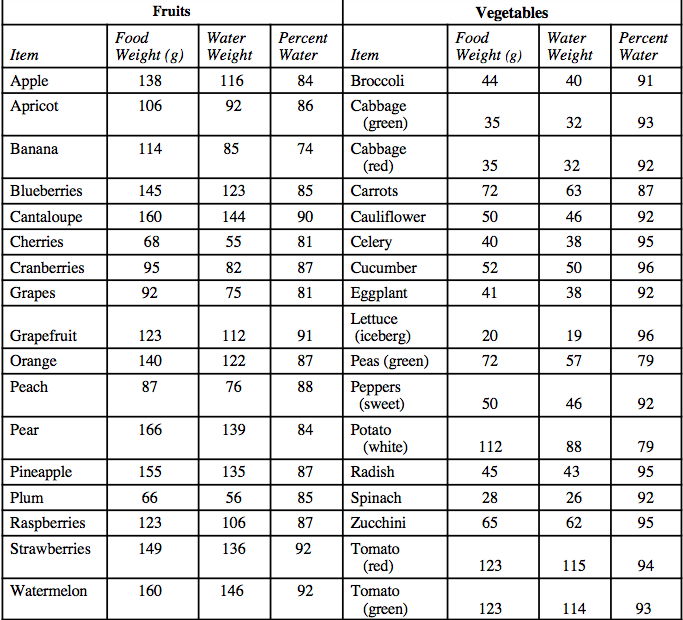Hydration in Sport – Part 2

Water – Training – Diet : Hydration in Skiing
In the previous article we made a few points on why water is important and how much the daily loss and therefore the daily intake should be.
We’ll now take a closer look at how some other variants can change the picture for an athlete. We’ll also look at which actions to take in order to maintain the natural balance of the body and optimise performance.
The X Factor
Below we have selected some of the factors that will influence how much water is required while exercising:
The Energetic Nature of the Sport:
Aerobic, Lactacyd Anaerobic and A-Lactacyd Anaerobic Effort.
- Sports that are based on aerobic effort are those that last for a long period of time (over 2 minutes) and will normally result in a higher loss of water through sweat.
- A-Lactacyd Anaerobic Effort lasts 4 to 8 seconds and normally requires long rest pauses during the sets (weight lifting, sprints).
- Lactacyd Anaerobic effort is longer than the Lactacyd Anaerobic Effort, and lasts up to two minutes, (using lactic acid to produce energy). Depending on the discipline this effort will have longer or shorter rest pauses (skiing, sprint cycling etc).
Generally speaking aerobic sports have the highest need of water intake before, after and during the performance.
Altitude:
At sea level you need a different amount of re-hydration than at 1,000m or 2,500m or above.
What changes with the higher altitude is not the quantity of oxygen (which stays the same) but the pressure of the air. This has two main impacts on the body that requires an increase in water consumption:
1. more urine loss
2. a change in the blood composition and production
The health of the performer depends on water once again for these processes to happen with the minimum effort possible.
Air Humidity:
We’ve seen how breathing requires water.
We won’t explore the complete physiology of breathing but for the time being we can say that our lungs must have a moist state to function in and that state needs to be maintained in order for the breathing processes to function normally and effortlessly.
Additionally the same exercise in a moist environment will have different impact on the body than it does in a dry one.
These conditions can obviously be mixed; altitude camps for example can mix higher altitude conditions with drier air; therefore significally transforming the environment in which the athlete trains.
Intensity
Another factor to bear in mind while looking at the advised quantities of water is the intensity of the exercise you are doing.
Running isn’t just running, for example. Saying “running at 70% of your max” could be a good way to make the information a little more specific but still fairly incomplete, considering that some activities that are well acquired have a different organic impact on your body, than activities that are new.
A long-distance cyclist is an endurance athlete, but when asked to run X amount of time at X % bpm his body will have a different physiological response than if he were cycling for the same period.
Water in Training . Aerobic
The general advise in water intake is spread across 3 different timeframes:
1- Pre Workout
2- During Workout
3- After Workout
Generally speaking for endurance sports the recommendations are to :
1. Drink half litre of water before you start (within 2 hours before)
2. Make sure to drink 250 ml every 15 minutes during the workout
3. Keep the intake up during the 30 to 90 minutes after the end of the workout (depending on the duration and the intensity of the workout)
To avoid any indigestion problems, don’t exceed water intake over 1.2 litres per hour.
As you can see the 2.5 litres we talked about as minimum quantity in the previous article can easily be exceeded in endurance sports.
Anaerobic Sports
The intake needed during Anaerobic effort can follow the same principles; according to the specific needs, you can drink up to 250ml every 20-25 minutes during the workout.
If the subject is performing a sport where a water resource can be difficult to find/keep with himself, a bit of planning will be needed and every chance to have drink should be taken.
On this last point is worth remembering that the stomach will react differently on the quantity received. A high amount of water will be “dismissed” by the stomach faster than a small amount.
Depending on how, and how much water is needed, this mechanism can be proficently used by an expert coach to hydrate and correctly train the athlete.
Skiing Hydration
Alpine Skiing could be a very interesting sport to take as a case study. It is practiced:
- at high altitude
- relies on the lactacyd anaerobic energy system
- can be charaterized by a difficult-to-come-by water source.
Depending on the physical conditions of our athlete and the kind of training they will be put through, the water quantities given each times will be different.
A cheap and easy way of testing hydration is through body weight measurement.
The athlete is weighed before the test, then performs the workout without drinking or peeing (or drinking a measurable amount) and then is weighed again.
The difference in weight between measuraments is the quantity of water lost.
Hydration without the Bottle
So far it’s been clear how much water is needed while working out.
We also tried to make clear in the earlier article that lot of processes depends on water; sport performance is only one part of it.
The rebuilding of the body tissues depends highly on good hydration, to the point that recovery can be stopped or slowed down to the miniumim speed in absence of water.
We also saw that drinking can become a pretty invasive, since reaching 2-3 liters of liquid per day needs the constant presence of a bottle nearby.
Food Aid
It’s then worth making clear that hydration can be maintained also (and specially) by the right choice of food.
Going to the supermarket is very easy to find products that are de-hydrated and packed with calories (especially industrial and processed food). The ideal choice for our athletes should be the opposite one.
Fresh natural food (fresh fruit and vegetables) have the great characteristic of carrying a lot of water. Especially considering that digestion itself needs a water intake in order to happen; it’s a contradiction to eat “dry” when we need “wet” in order to assimilate the nutrients.
So while a constant amount of water is recomended during the meal, the choice of food will help making this process more efficient and less dependant on drinking itself.
Antagonist food
Interesting cases are caffeine and alcohol, as they force the body to lose more water than what’s retained.
That’s why after drinking such elements, your urine can look paler (see previous article) than normal. For this reason a urine test after the consumption of alcohol or coffee is not going to give a realistic result on your conditions.
Meat and sugar have a similar invasive/counterproductive effect on the body. Unbalancing the mineral level required for the digestion process and the rebalance of the natural PH.
Hydration in Skiing – Coming up next
On the next article we’ll have a closer look at the link between water and diet; and how to keep the body in its natural balance and make it perform well.
Click here for Part 1
Click here for Part 3
The Subzero Coaching Team
Note to the reader.
None of the above is intended to substitute the opinion of your doctor. The information provided on this site should not be used for diagnosing or treating a health problem or disease. It is not a substitute for professional care.
Seminars on this and many more topics are delivered in all our ski instructor courses.
Check out our Autumn and Winter Gap Courses, ISIA Level 3 Course, Level 4 Course, Race Training as well as the Full Focus, our one to one coaching course.
Looking for summer training? Check out our Summer Ski Instructor Training schedule!
